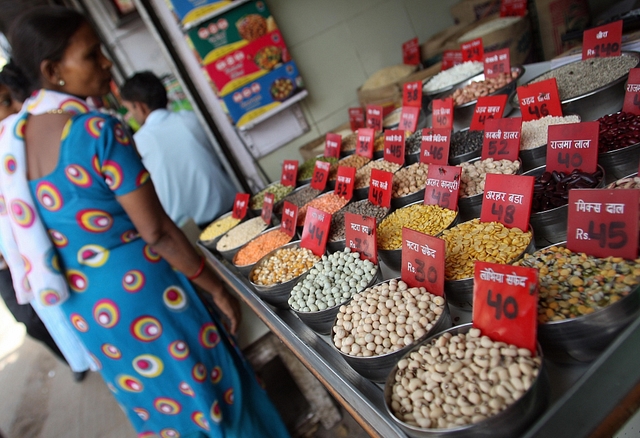
Economic Survey 2019: CPI Inflation Declines To Five Year Low, Fiscal Deficit To Narrow To 3 Per Cent In FY21
The Economic Survey 2018-19 [PDF] has noted that India has transitioned from a period of high and variable inflation to a more stable and low level of inflation in the last five years.
This includes a continual decline in CPI inflation rate to 3.4 per cent in 2018-19 from 3.6 per cent in 2017-18. The Wholesale Price Inflation is projected to see a marginal increase from 3 per cent in 2017-18 to 4.3 per cent in 2018-19.
Here is a graph depicting inflation movement for the past five fiscal years:
Food inflation too has declined over the last five years, and has remained below 2.0 per cent for the last two fiscals. CPI rural inflation has seen a decline but urban inflation has seen a marginal rise.
The government is striving to achieve [PDF] a fiscal deficit target of 3 per cent by FY21 and a debt to GDP ratio of 40 per cent of GDP by 2024-25. The fiscal deficit for FY19 stood at 3.4 per cent of GDP and debt to GDP ratio is at 44.5 per cent.
The total Central Government expenditure has fallen by 0.3 percentage points in 2018-19 and revenue expenditure has shrunk by 0.4 percentage points compared to the GDP in FY19. Individual states have seen a robust growth in tax and non-tax revenues.
India’s monetary policy [PDF] in FY19 saw the benchmark policy rate first being hiked by 50 bps and later reduced by 75 bps due to lower inflation, growth slowdown and softening global monetary conditions.
NPA has declined and credit growth has seen acceleration when it comes to the banking sector. Liquidity conditions though remain tight. The corporate insolvency resolution process has yielded a resolution of 94 cases, resulting in the settlement of claims worth Rs 1,73,359 crore.
In case of Insolvency and Bankruptcy Code (IBC), 6,079 cases worth Rs 2.84 lakh crores were withdrawn before admission and Rs 50,000 crore has been received by banks from NPAs.